|
|||
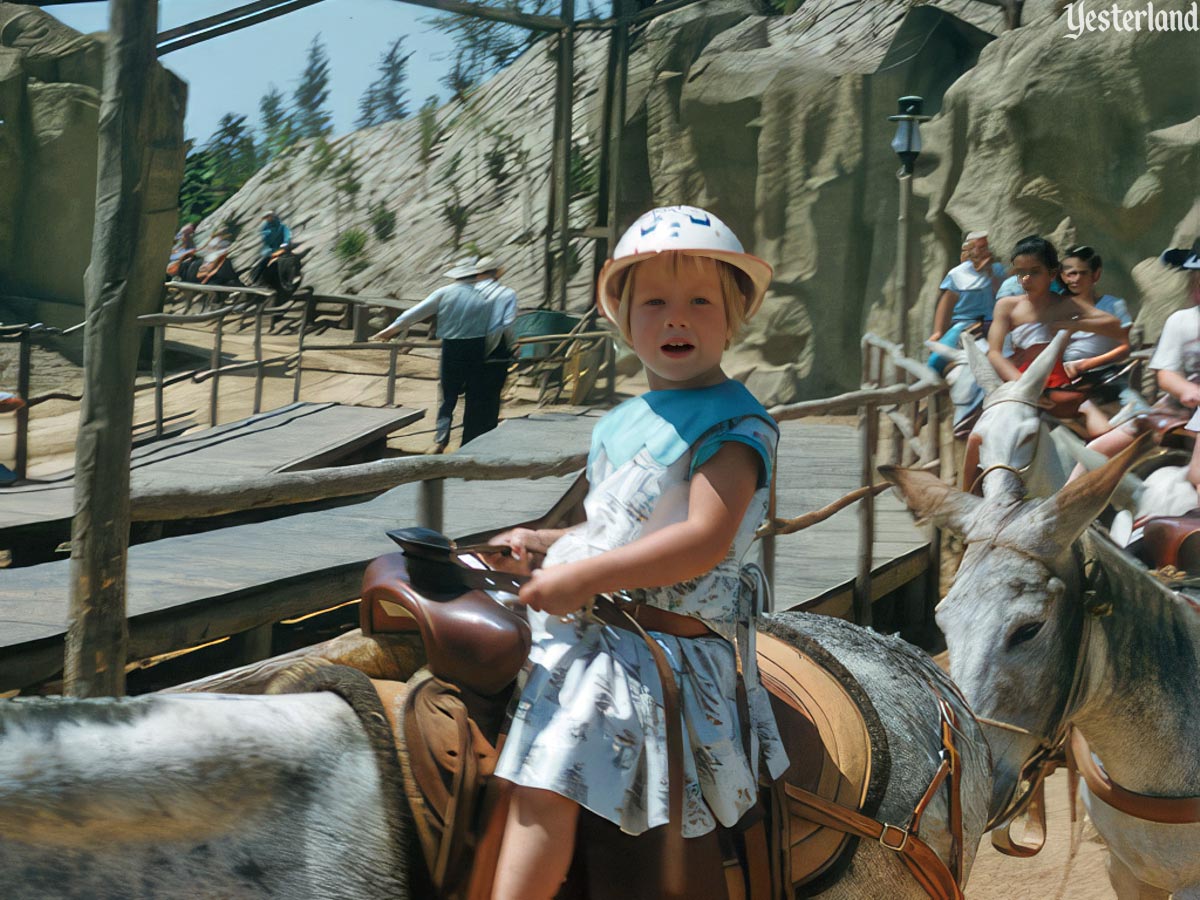
Photo by Florence Weir, 1956 Mule train for kids |
|||
|
There are plenty of high-tech attractions in Yesterland, including the Flying Saucers, America the Beautiful in Circarama, and the Yesterland-Alweg Monorail. But there’s a ride that’s so low-tech that it keeps operating even if there’s a power failure. However, that doesn’t mean it’s always reliable. It can stop for no apparent reason—or for reasons known only to the mules that provide the ride. |
|||
|
|
|||
|
Let’s compare high-tech and low-tech. The high-tech Indiana Jones Adventure opened at Disneyland in 1995 and proudly featured revolutionary, new ride conveyances capable of random variability. Revolutionary and new? Not really. The low-tech mules provided random variability forty years earlier. |
|||
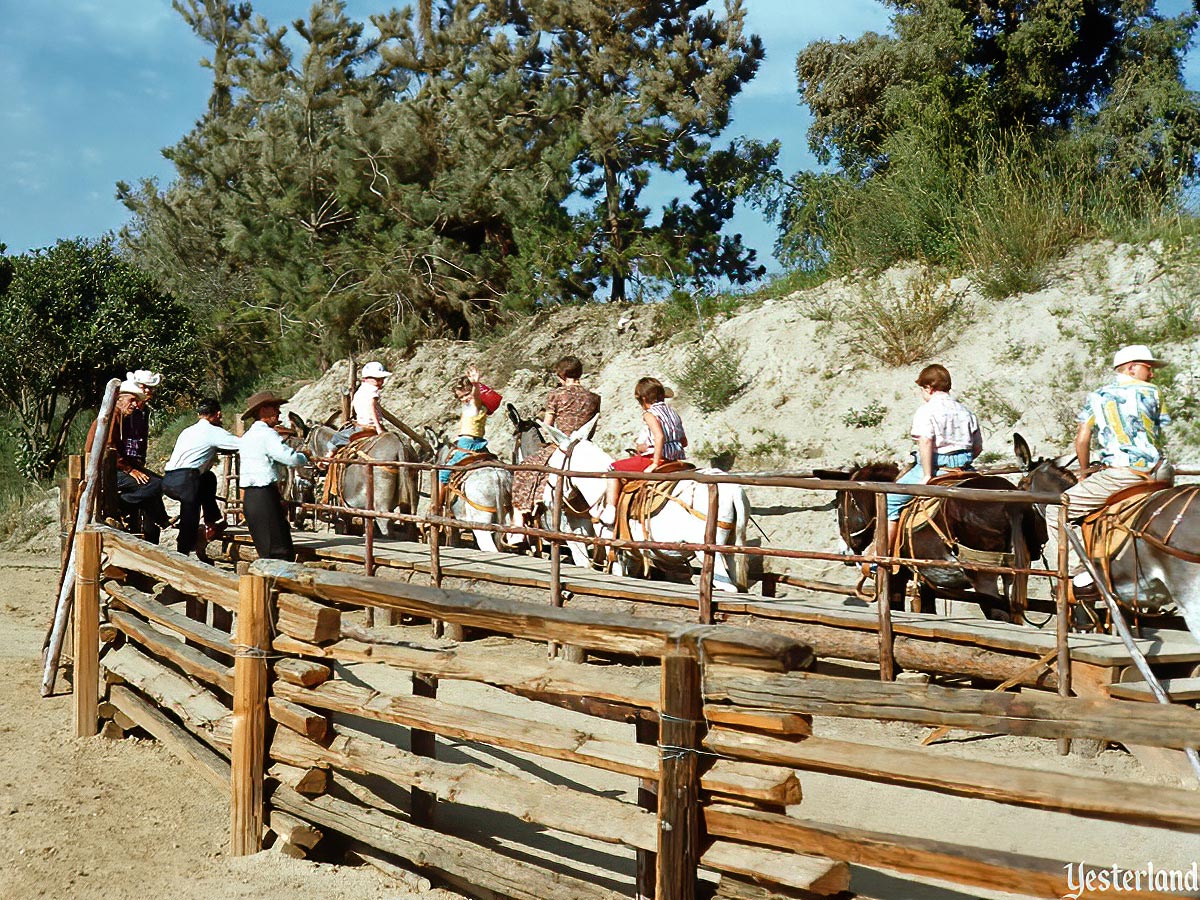
Photo by Charles R. Lympany, circa 1955-1956, courtesy of Chris Taylor Early load area |
|||
|
Mules are unpredictable. Sometimes they move right along; sometimes they barely move at all; sometimes they just stop; and sometimes they even back up. You never get the same ride twice. You might wonder if you’ll ever make it back to the loading area. Yes, just like the Indiana Jones Adventure. |
|||
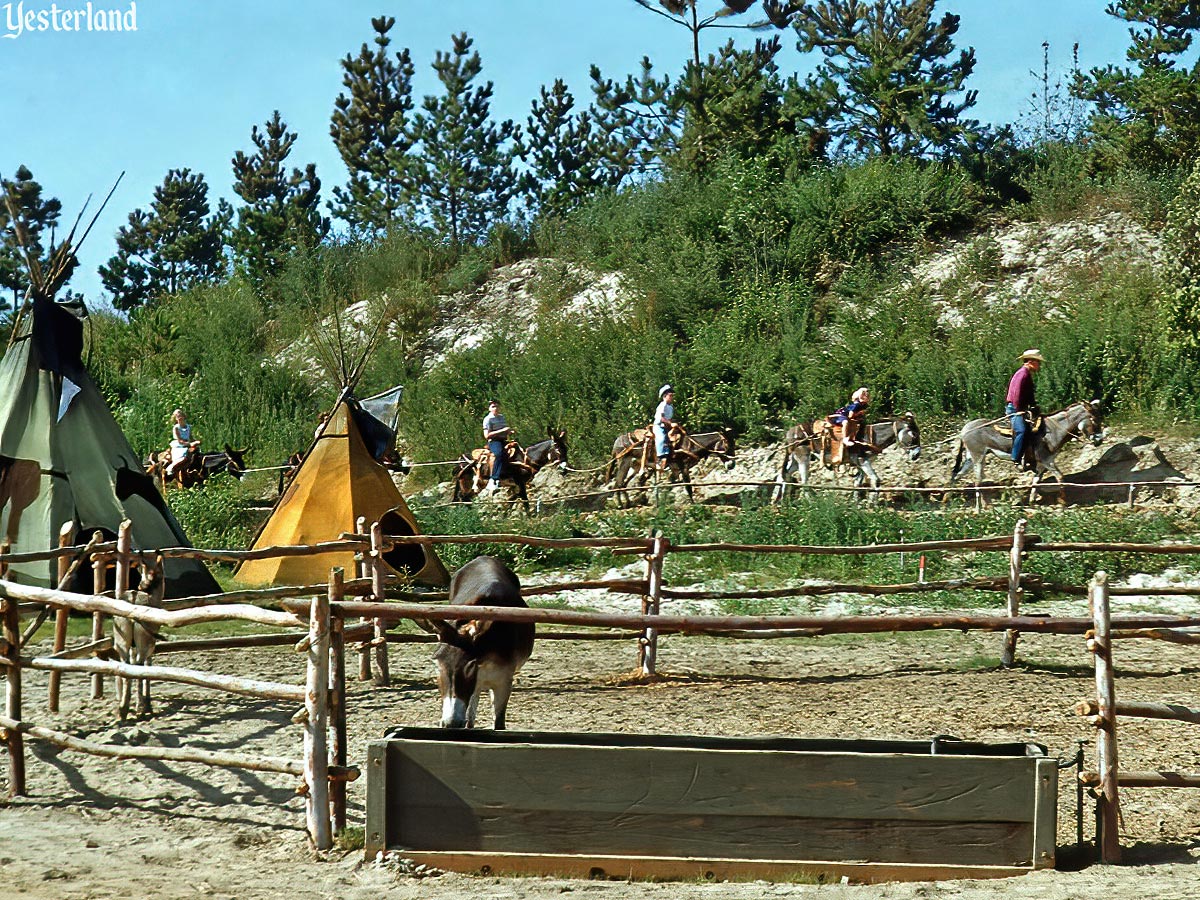
Photo by Charles R. Lympany, circa 1955-1956, courtesy of Chris Taylor Break area for mules |
|||
|
Climb onto a saddle on the back of a mule for a scenic ride across manmade hills, planted with shrubs and pine trees. Pretend you’re in the Old West—the undeveloped West, as represented by a largely undeveloped corner of the park. |
|||
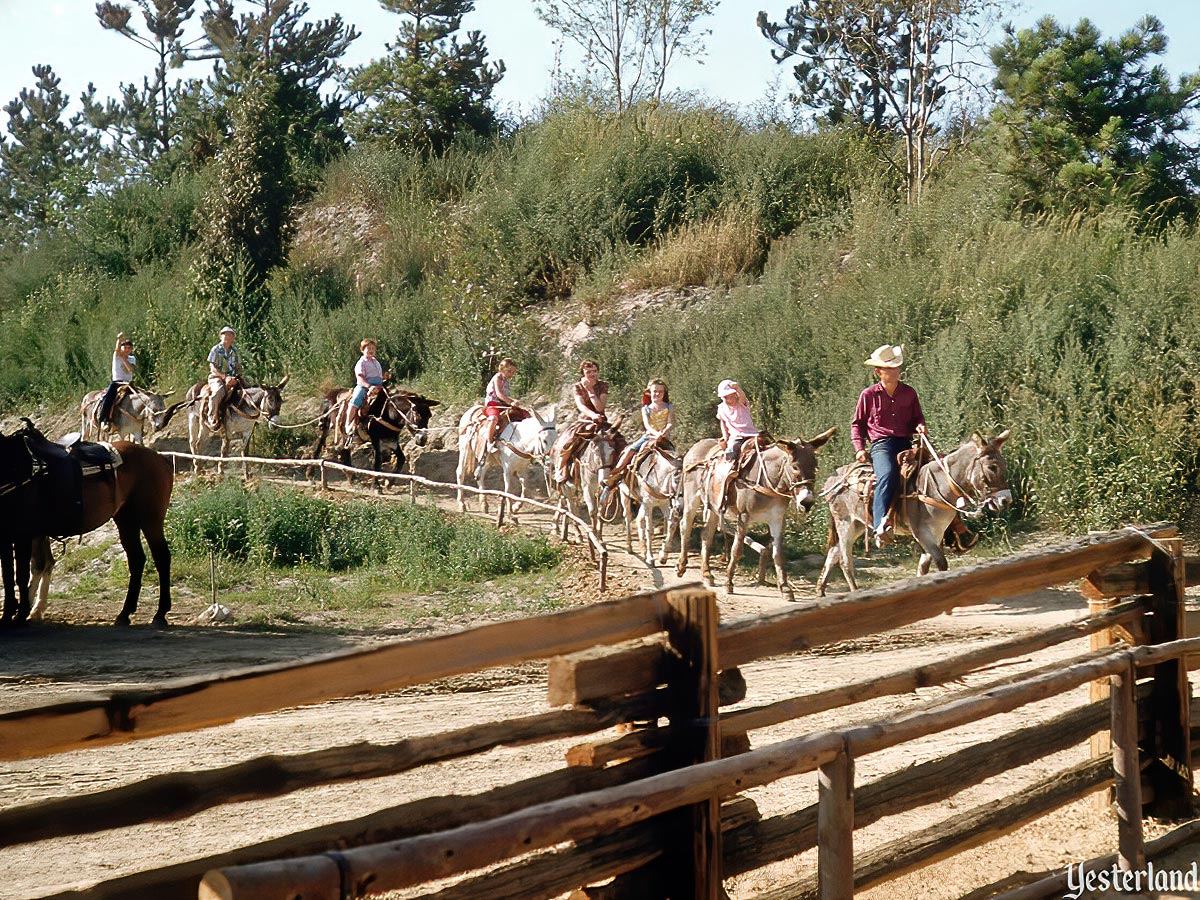
Photo by Charles R. Lympany, circa 1955-1956, courtesy of Chris Taylor No town of Rainbow Ridge yet; no fancy scenery yet; no animated animals yet |
|||
|
The version of the ride in the three photos directly above is called the Mule Pack. Someday it will become the Rainbow Ridge Pack Mules. But that won’t happen until they build the town of Rainbow Ridge. |
|||
|
|
|||
|
When Disneyland opened in July 1955, the Mule Pack was one of the original attractions. The attraction operated in the same area as the original Stage Coach and the original Conestoga Wagons. Disneyland: the Nickel Tour, the wonderful 1995 book by Bruce Gordon and David Mumford, has this item about the cost of the “ride system”: Those pack mules must have been the most economical ride system ever developed—in May of 1957, Disneyland bought 25 of the pesky little critters for just $50 apiece! And the daily feed bill for their whole herd of 75? Just twenty cents a head. Disneyland: Inside Story, the equally wonderful 1987 book by Randy Bright, has this about the reliability of this economical “ride system”: Although blessed with extraordinarily short work hours, the mules would stop for no apparent reason along the trail and refuse to continue, regardless of the verbal lashings applied by the mule skinner. And almost anywhere, at any time, one of the creatures would break out into a loud and repetitious series of brayings that sounded astonishingly like “hee haw.” |
|||
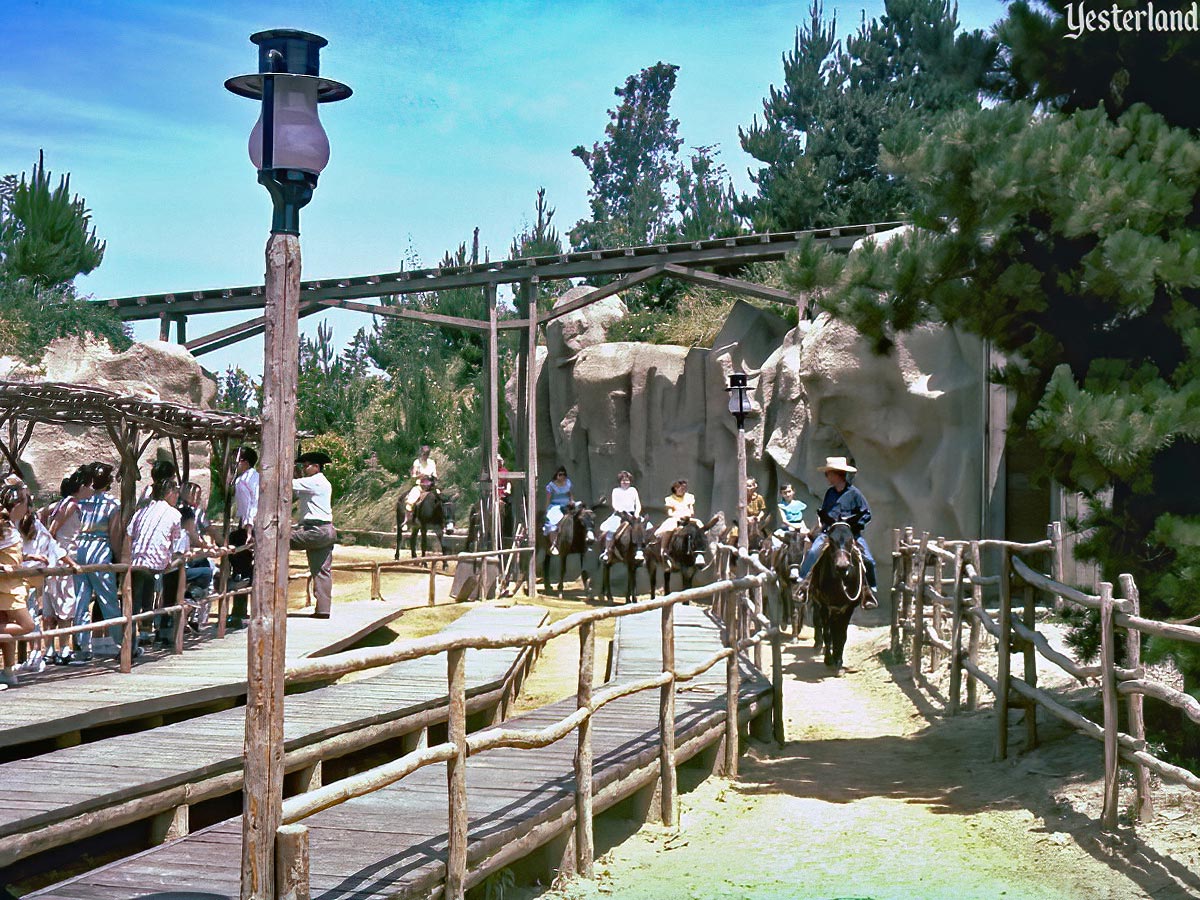
Photo by Merrill A. Garner, circa 1958 Enhanced Load area |
|||
|
The Mule Pack lasted less than a year with its original name and its modest setting. A $2 million Disneyland expansion for summer 1956 included the Disneyland Skyway, the Rainbow Caverns Mine Ride, the Indian Village, the Indian War Canoes, Storybook Land, and Tom Sawyer Island. The Rainbow Caverns Mine Ride brought the town of Rainbow Ridge, the Living Desert, an enhanced load area for the mule ride, and more for riders to see along the trail. |
|||
|
|
|||
|
The mule ride became the Rainbow Ridge Pack Mules in June 1956. Disneyland guests needed to part with a top-tier ticket to ride on a mule. When Disneyland introduced the “E” ticket in June 1959, that’s what the Rainbow Ridge Pack Mules required. |
|||
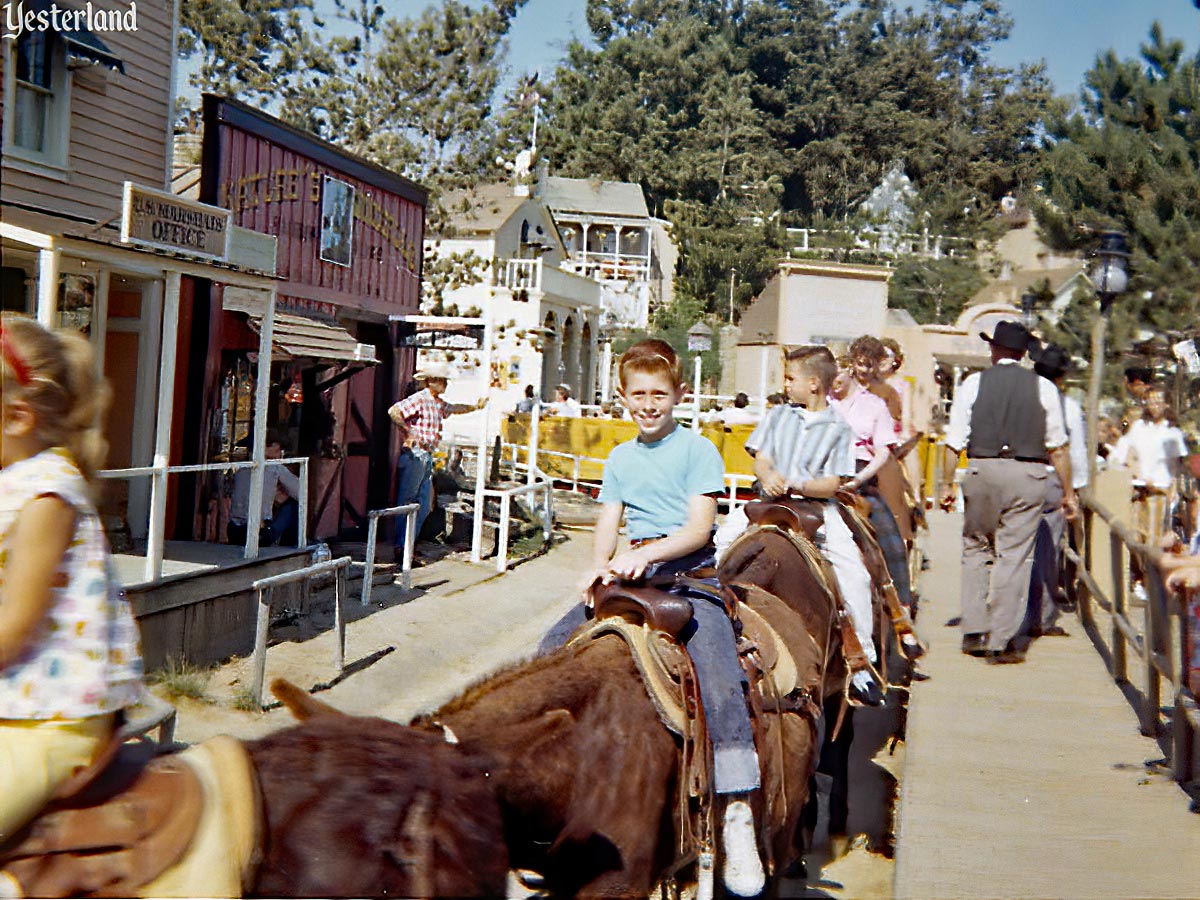
Photo by Christian Paul Jr., 1962, Courtesy of Chris Paul Pack Mules Through Nature’s Wonderland |
|||
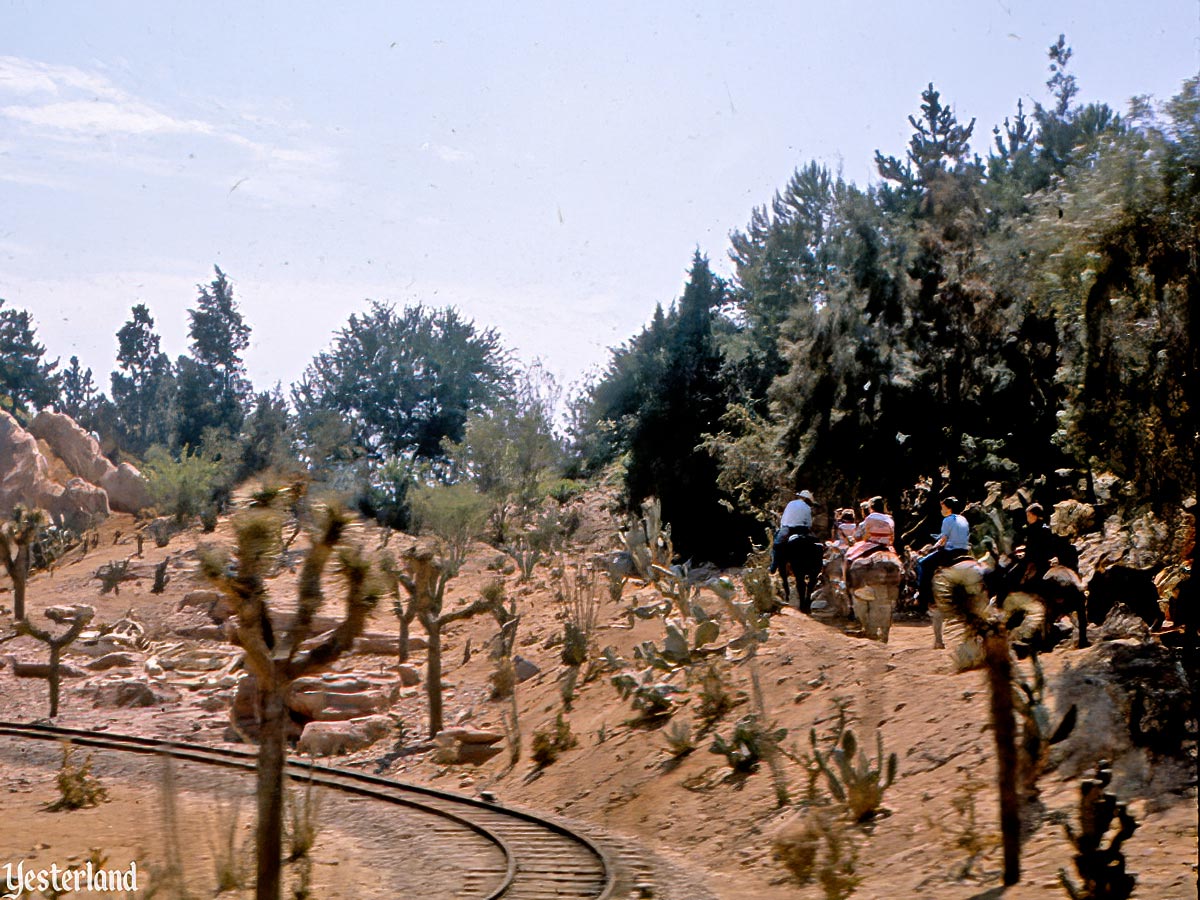
Photo by Roger J. Runck, 1960, courtesy of Robin Runck Riding through the Living Desert |
|||
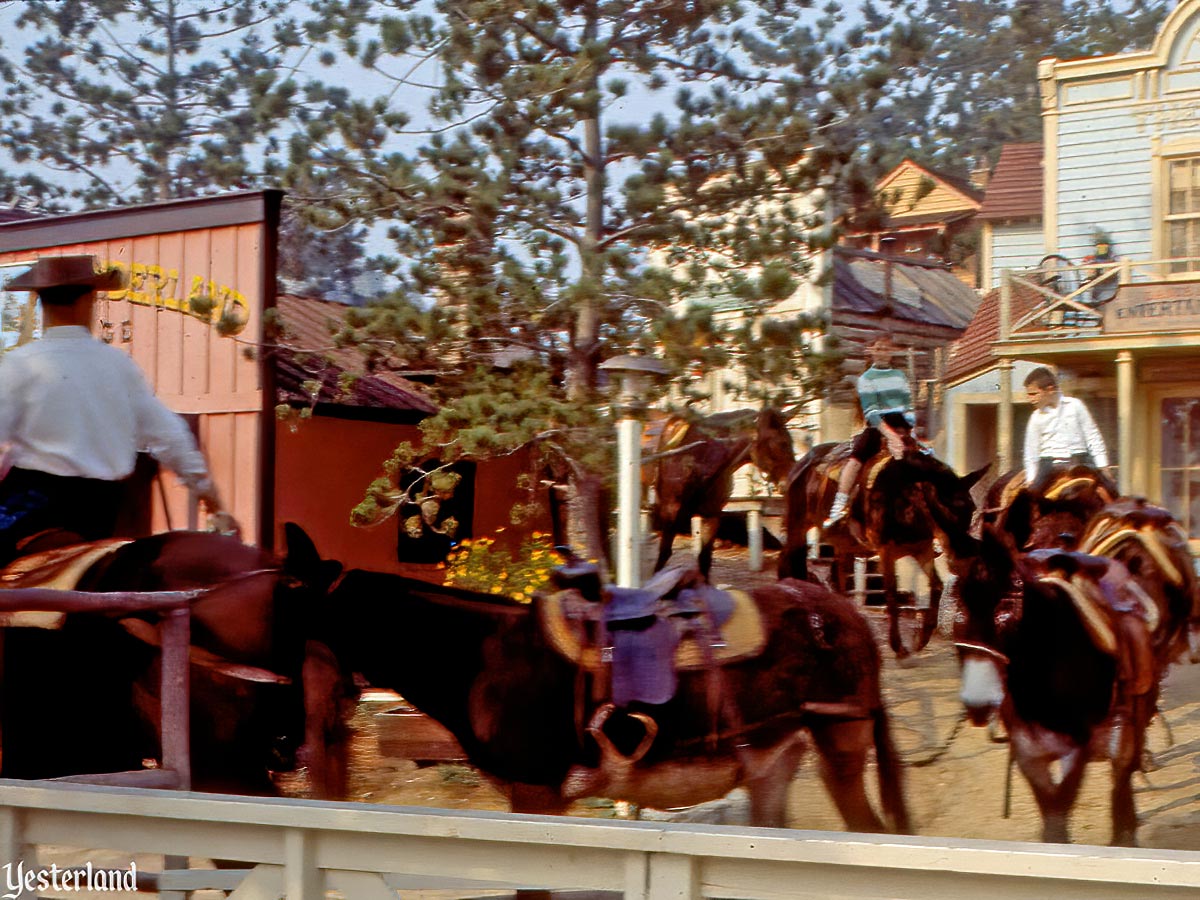
Photo by Roger J. Runck, 1961, courtesy of Robin Runck Riding through the streets of Rainbow Ridge |
|||
|
The next expansion was in 1960. A $1.8 million transformation turned the 7-acre mule ride and mine train grounds into Nature’s Wonderland. The project included 204 animated animals, 75-foot Cascade Peak, and new environments inspired by Walt Disney’s True-Life Adventures. The enhanced mule ride became the Pack Mules Through Nature’s Wonderland in June 1960. |
|||
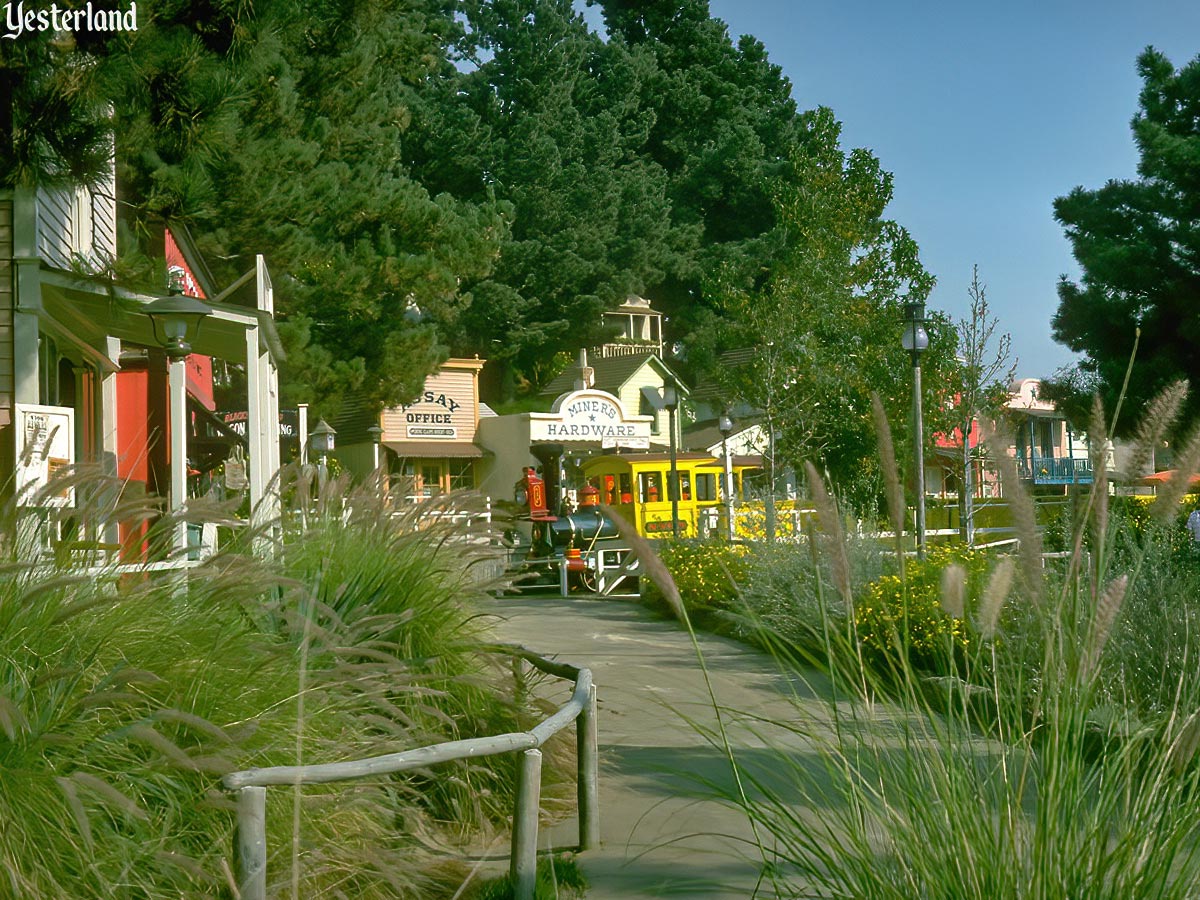
Photo by Werner Weiss, 1974 Former load area for Pack Mules in 1974, when the Mine Train was still operating |
|||
|
The Pack Mules Through Nature’s Wonderland ceased to operate in 1973, but the Mine Train Through Nature’s Wonderland continued to operate until the beginning of 1977. Much of the area that had been home to the little yellow trains and the unpredictable mules was replaced by Big Thunder Mountain Railroad (1979) and Big Thunder Ranch (1986), although Cascade Peak remained into 1998. Among Disney parks worldwide, the mule rides were unique to Disneyland. They never were duplicated. The next time somebody tries to tell you that “E” ticket means that a ride is particularly intense and thrilling, bring up the mule ride. Disney Imagineering Legend Bob Gurr did not design Disneyland’s mules. If he had, they would have been more reliable. And more stylish. |
|||
|
|
Click here to post comments at MiceChat about this article.
© 2023 Werner Weiss — Disclaimers, Copyright, and Trademarks Updated March 31, 2023 |
||
